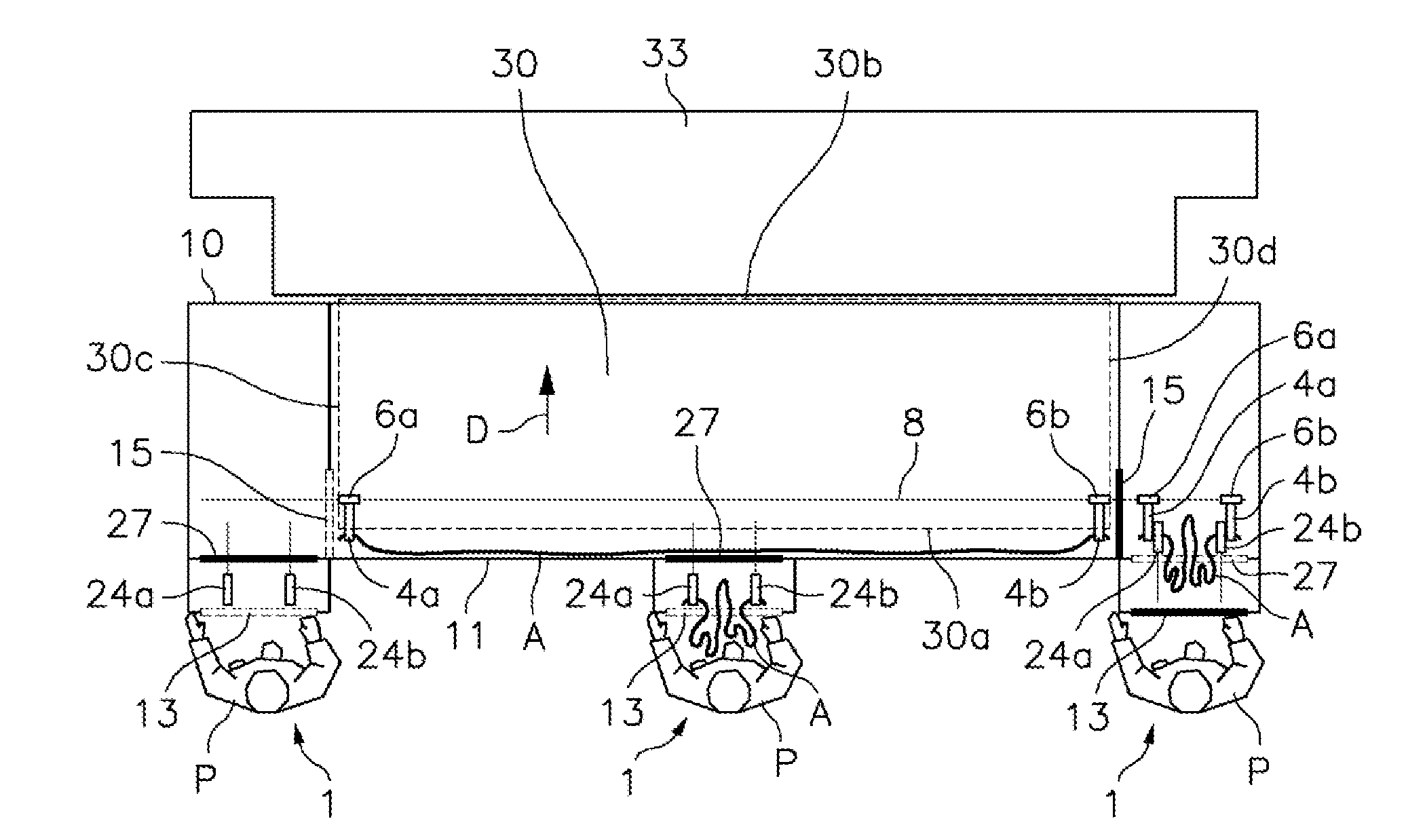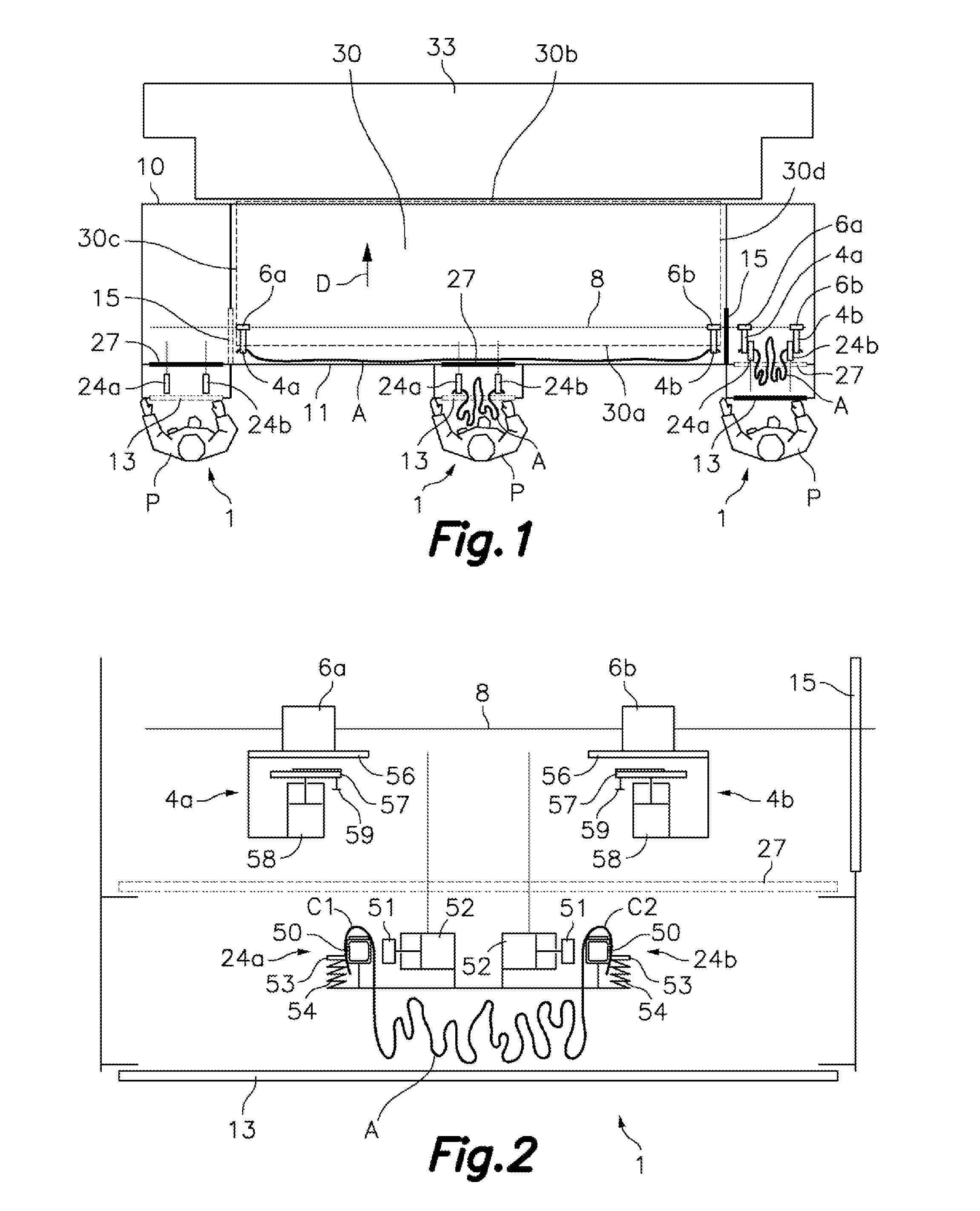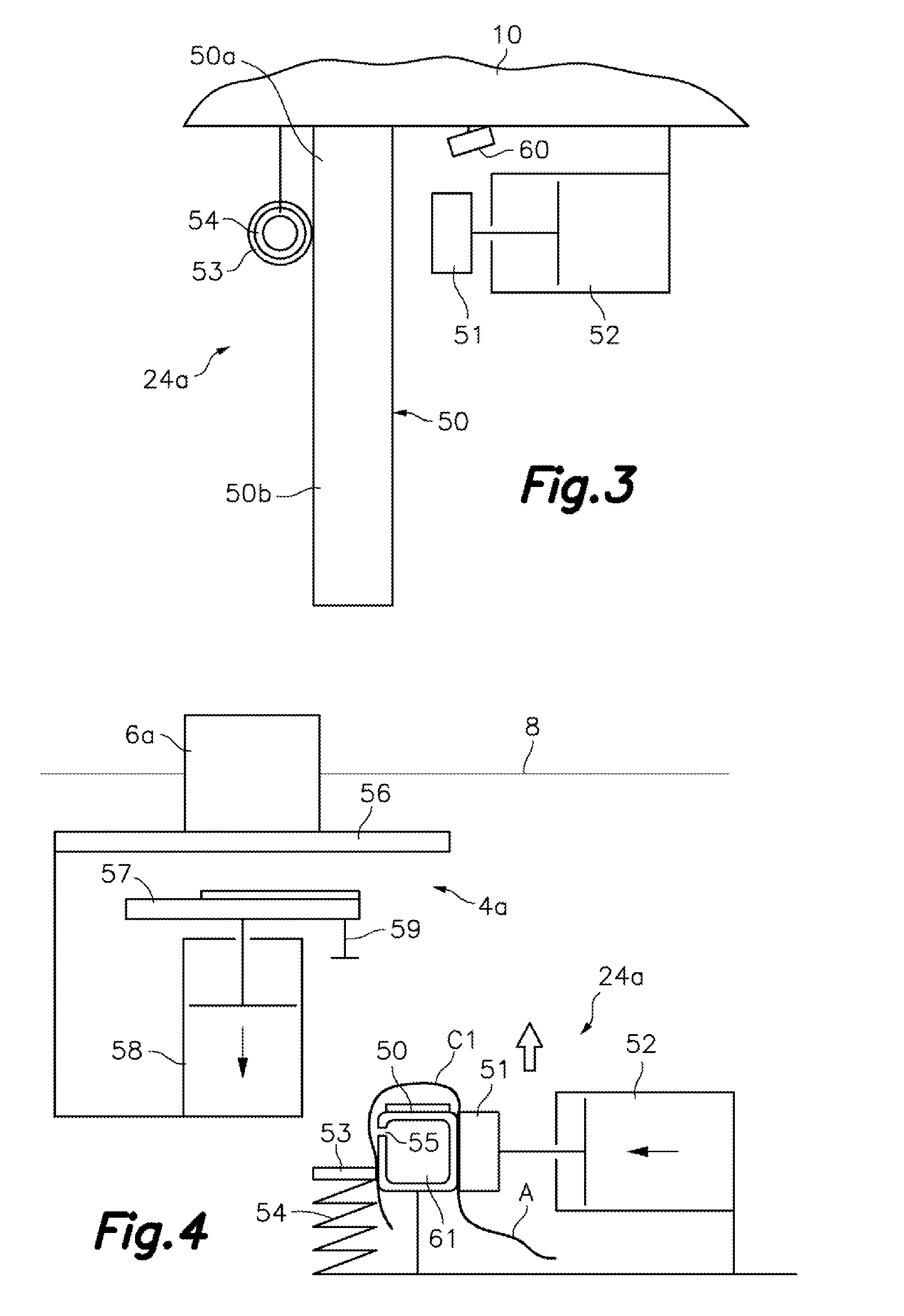Machine for spreading out and loading flat clothing articles
a flat clothing and machine technology, applied in the direction of stretching, washing apparatus, application, etc., can solve the problems of folds and wrinkles in flat clothing articles, and achieve the effects of reducing or eliminating, reducing the risk of injury, and good visibility
- Summary
- Abstract
- Description
- Claims
- Application Information
AI Technical Summary
Benefits of technology
Problems solved by technology
Method used
Image
Examples
second embodiment
[0092]Referring now to FIGS. 13 to 19, there is shown a machine for spreading out and loading flat clothing articles according to the present invention, which comprises a frame 10 supporting a conveyor belt 30 having a considerably horizontal or slightly inclined upper section moving in a loading direction D. The conveyor belt 30 has a loading end 30a on which there is deposited a duly spread out and positioned upper part of flat clothing articles A1, A2, and an unloading end 30b, from which the spread out flat clothing articles A1, A2 are transferred to a laundry processing unit 33, such as an ironing unit or a folding unit, schematically depicted by means of dashed lines. Flat clothing articles are understood as linen elements and other clothing for use in the home, hospitals, hotels, restaurants, etc., such as tablecloths, napkins, sheets, pillowcases, and cloths, among others.
[0093]The mentioned loading end 30a of the conveyor belt 30 is covered frontally by a protective cover 1...
third embodiment
[0120]In the third embodiment with three loading stations 1, 2, 3, when the first and second access protection screens 13, 14 of the first and second loading stations 1, 2 are in the closed position, they prevent the access of the first and second operators P1, P2 to the respective pairs of first and second loading clamps 24a, 24b; 25a, 25b, and the third loading station 3 comprises a third access protection screen 31 moved by driving means between an open position, in which said third access protection screen 31 allows the access of the third operator P3 to the corresponding pair of third loading clamps 26a, 26b when the same is in the loading position, and a closed position, in which said third access protection screen 31 prevent the access of the third operator P3 to the corresponding pair of third loading clamps 26a, 26b.
[0121]Furthermore, the first, second and third loading stations 1, 2, 3 include respective first, second and third intermediate screens 27, 28, 29 moved by dri...
PUM
| Property | Measurement | Unit |
|---|---|---|
| distance | aaaaa | aaaaa |
| distance | aaaaa | aaaaa |
| distance | aaaaa | aaaaa |
Abstract
Description
Claims
Application Information
 Login to View More
Login to View More - R&D
- Intellectual Property
- Life Sciences
- Materials
- Tech Scout
- Unparalleled Data Quality
- Higher Quality Content
- 60% Fewer Hallucinations
Browse by: Latest US Patents, China's latest patents, Technical Efficacy Thesaurus, Application Domain, Technology Topic, Popular Technical Reports.
© 2025 PatSnap. All rights reserved.Legal|Privacy policy|Modern Slavery Act Transparency Statement|Sitemap|About US| Contact US: help@patsnap.com



